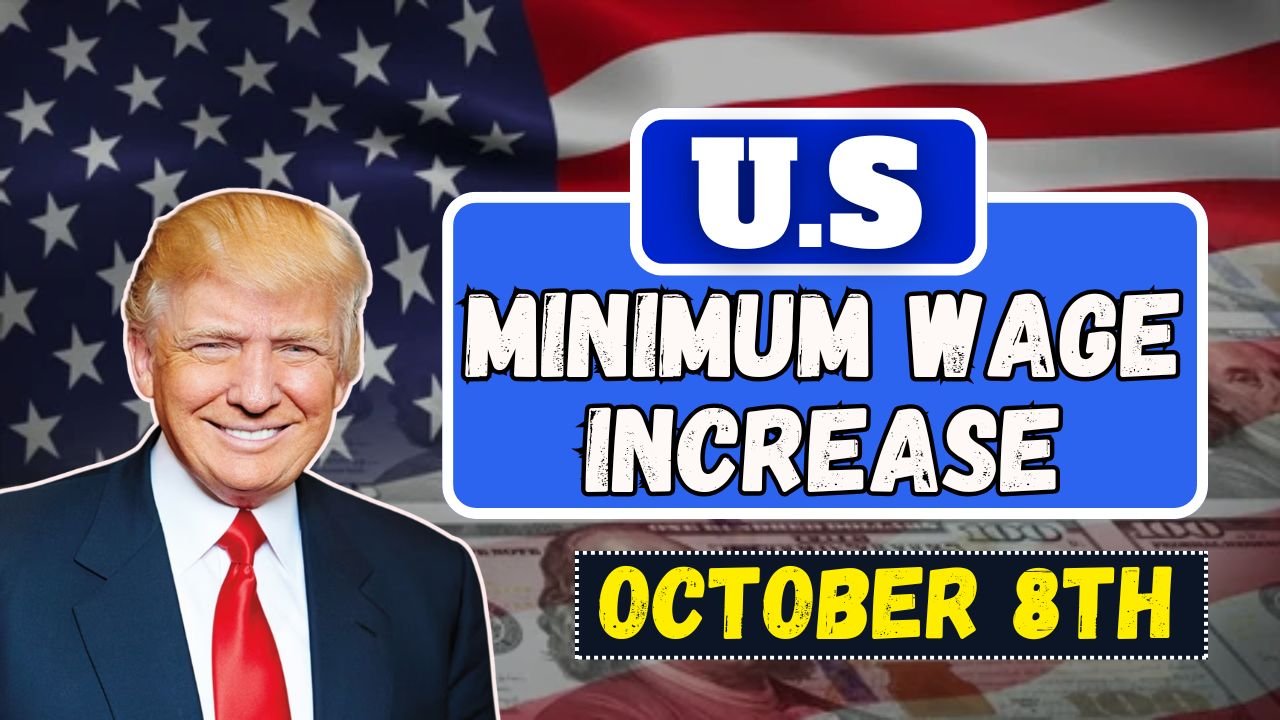On October 8, 2025, the federal minimum wage will rise, marking a major shift in the United States. Millions of people across numerous industries will be impacted by this development. This action is a component of initiatives to raise low-wage workers’ conditions of living and give them more financial power. This essay will go into great length about the new minimum wage, how it differs from state to state, and how it affects both companies and employees.
Federal Minimum Wage Increase
The federal minimum wage will go up from $7.25 to $10 per hour on October 8, 2025. For workers whose pay has been flat for years, this boost is a huge relief. The goal of this action is to improve workers’ financial status in accordance with growing living expenses and lessen income inequality.
Although the federal government has mandated this rise, many states and towns already have minimum wages that are higher than the federal rate. This indicates that workers in certain industries are already getting paid more.
Wage Variations at the State Level
Many states already have wages higher than the federal minimum wage. Once the new federal rate is implemented, states with lower rates will need to update their wage structures. For example:
- California: $16 per hour
- New York: $15.50 per hour (varies by region)
- Florida: $12 per hour
- Texas: $10 per hour (equal to the federal minimum)
This means that the federal rate sets a minimum standard, but in many areas, employees may receive higher wages based on local regulations.
Impact on Workers
Minimum wage workers will see a significant increase in their monthly income. For example, if an employee works 40 hours a week full-time, their annual income will increase from $15,080 to $20,800. This additional income can help cover rent, groceries, healthcare, and other essential expenses.
Also, higher wages can reduce dependence on government assistance programs and boost consumer spending. Lower-income workers typically spend the additional income immediately on goods and services, which also benefits the economy.
Opportunities and Challenges for Employers
This wage increase will also impact businesses.
- Increased Labor Costs: Small businesses will need to adjust their budgets to accommodate higher wages.
- Employee Satisfaction and Stability: Higher wages can increase employee satisfaction and reduce employee turnover, saving training and recruitment costs.
- Price Adjustments: Some businesses may offset higher labor costs by raising the prices of their products and services.
Employers are advised to adjust their financial strategies in advance to ensure compliance with federal regulations.
Minimum Wage and Inflation
Inflation is one of the major reasons behind this increase. In recent years, prices for housing, food, and other essential goods have risen faster than stagnant wages. This increase in the federal minimum wage is an attempt to narrow these gaps somewhat and increase workers’ purchasing power.
Economists point out that while this increase may not fully offset inflation, it is an important step toward ensuring fair wages for low-wage workers.
Impact on Young and Part-Time Workers
Minimum-wage workers are often young people, students, or part-time workers. This wage increase will provide greater incentives for this category of workers and ease their economic challenges.
Some employers may adjust work hours or staffing to manage costs, but overall, this move will benefit millions of part-time and entry-level workers.
Regional Variations and Enforcement
The federal minimum wage sets a baseline, but local governments’ enforcement methods vary. For example, cities like Seattle and San Francisco already have higher minimum wages, so the change will not impact workers there.
In contrast, in states like Mississippi and Georgia, where the minimum wage was previously lower, workers will now receive higher wages according to the federal standard.
Tips for Workers
Workers can take proactive steps to ensure they receive the new minimum wage:
- Check your payroll stub: Make sure your hourly wage has increased as of October 8, 2025.
- Know your rights: Federal and state labor departments provide resources for pay compliance.
- Communicate with employers: Report any pay discrepancies in advance.
By being vigilant and proactive, workers can take full advantage of the new pay policy.
Preparation for Employers
Employers also need to prepare to ensure compliance with the new minimum wage:
Working as intended.
- Adjust Contracts: Update employment contracts or agreements as needed.
- Budget Planning: Anticipate how the wage increase will impact operating costs and pricing strategy.
Failure to comply may result in penalties, so timely preparation is crucial.
Economic Impact
The entire economy may be impacted by this minimum wage increase. Consumer spending may increase as a result of higher wages, which would help the service, hospitality, and retail industries. However, some companies will have to pay more, which may affect employment trends.
According to economists, the economy as a whole will gain from the favorable effect on consumer demand, which will exceed the difficulties faced by firms.
Future Wage Trends
A larger trend of salary increases in the US includes the 2025 hike in the federal minimum wage. The goal of policymakers is to guarantee that workers earn a living wage and to lessen economic disparity. According to analysts, such hikes might happen gradually over the next few years, contingent on political objectives and economic conditions.
Employers and employees should keep an eye on policy changes and make appropriate plans.
Conclusion
For low-paid workers, the October 8, 2025, hike in the US federal minimum wage represents a big step forward. Millions of Americans will benefit from increased income and financial security as a result of the new $10 per hour standard.
more labor expenses will continue to be a problem for firms, but overall benefits like more customer spending and happier employees will be observed. This shift is a significant indicator for the US economy as well as for workers.
FAQs
Q1. When does the new federal minimum wage take effect?
The new federal minimum wage of $10 per hour takes effect on 8th October 2025.
Q2. Who will benefit from the minimum wage increase?
Millions of low-wage workers, including full-time, part-time, and entry-level employees, will see higher earnings.
Q3. Will all states follow the federal minimum wage?
States can set their own rates. Some states already have higher minimum wages, while others will need to match or exceed the federal rate.
Q4. How will the wage hike impact workers’ income?
Full-time employees working 40 hours per week could see their annual income rise from $15,080 to $20,800.
Q5. What should employers do to comply?
Employers should update payroll systems, revise contracts, and plan budgets to accommodate the higher labor costs.

